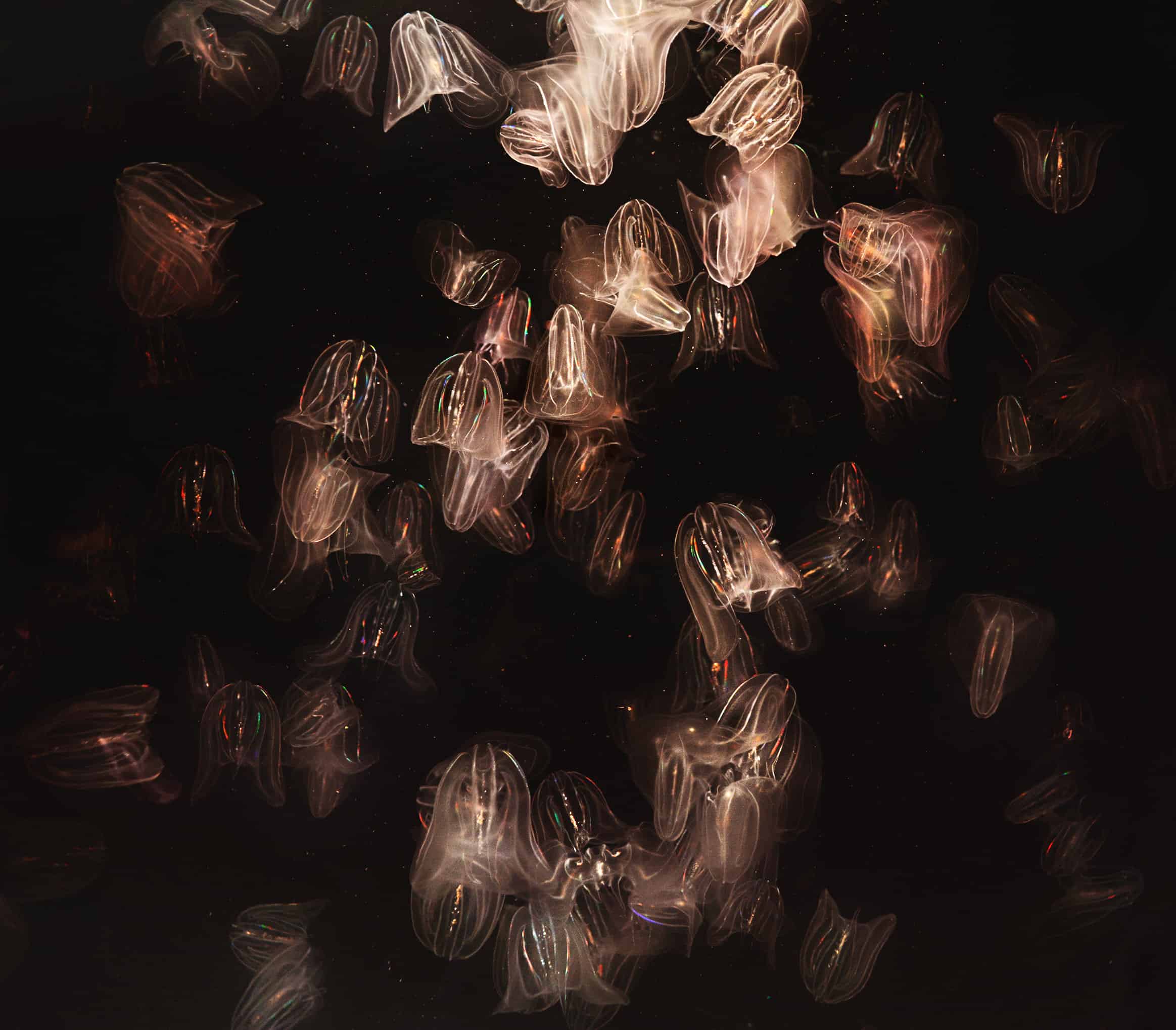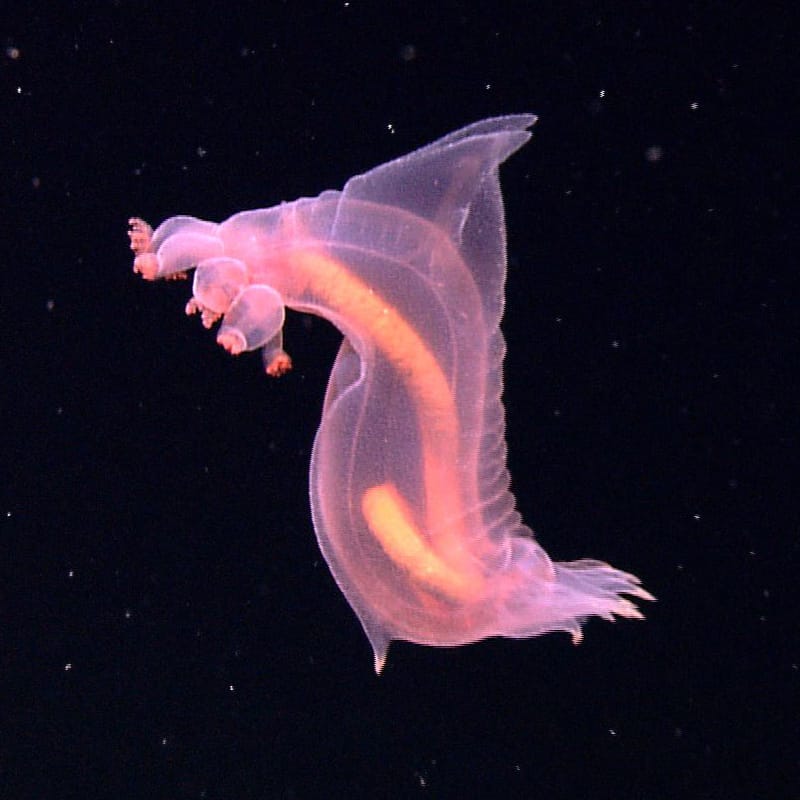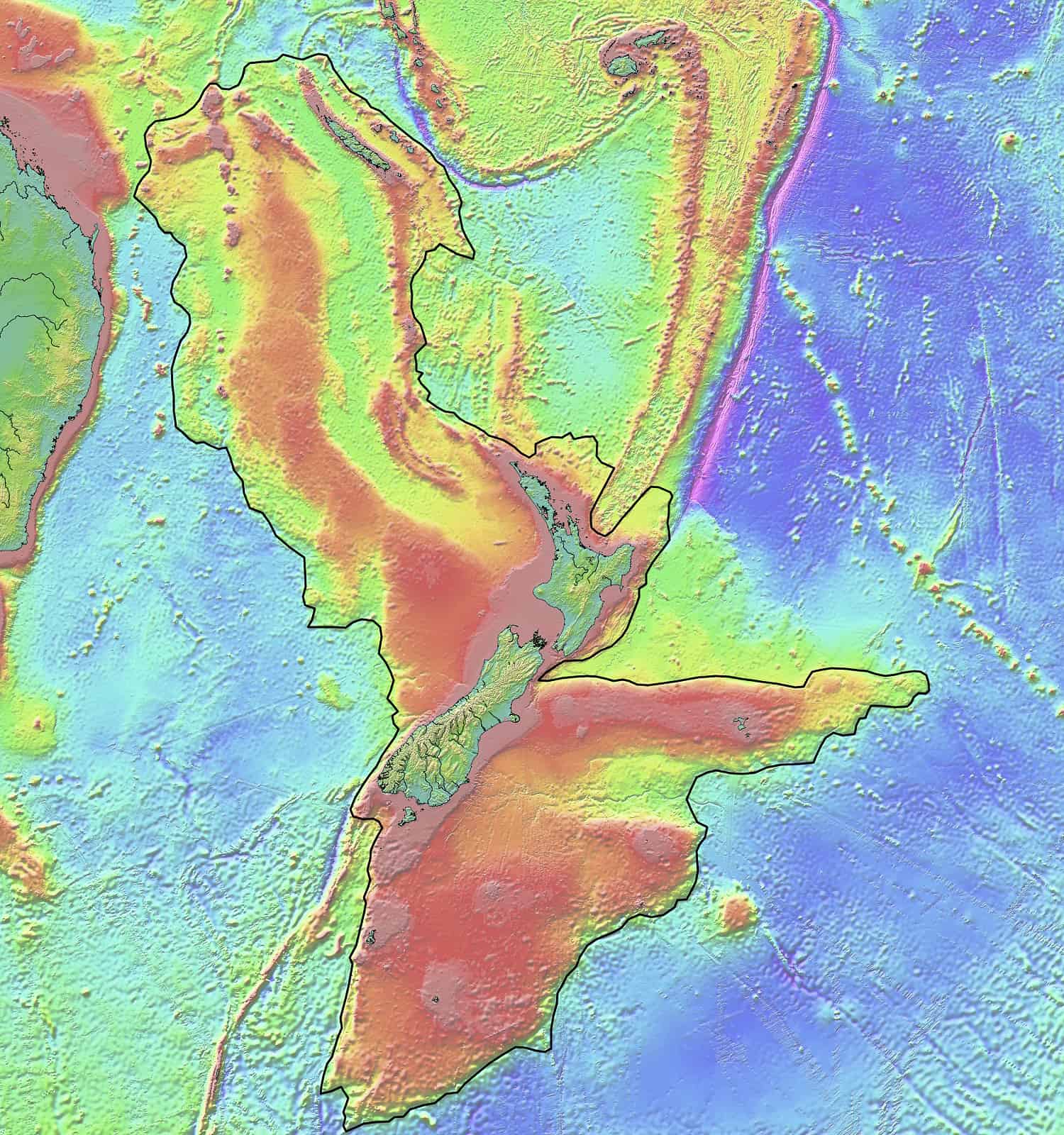Every ocean basin on Earth has ocean trenches- steep, narrow depressions in the deepest parts of the ocean. Subduction, a geophysical process between the edges of tectonic plates, is responsible for forming most ocean trenches. When the plates converge, the edge of the denser plate buckles and pushes down beneath the lighter, more buoyant plate. The convergence of oceanic crust and continental crust forms many trenches. Since the oceanic crust is more dense, it will subduct beneath the continental crust. Oceanic trenches are a result of this subduction zone. Scientists call the ocean region where trenches occur the hadalpelagic zone—the deepest part of these trenches sits in the hadal zone from 18,000 to over 36,000 feet.
So, where are the deepest trenches in the ocean, what incredible life thrives there, and how many thousands of feet do they lie beneath the surface? Read on to find out.
13. Ryukyu Trench-24,629 Feet Deep

The Ryukyu trench is home to a yet-to-be-named species of deep-sea comb jelly.
©ELEPHOTOS/Shutterstock.com
Occurring along the eastern edge of the Ryukyu Islands of Japan, the Ryukyu Trench sits 24,476 feet below the surface of the Philippine Sea. It runs 868 miles long and formed as the Philippine plate’s oceanic crust is subducted beneath the Eurasian plate’s continental crust. This subduction event began 15-25 million years ago.
In 2002, a remotely operated submarine documented a new species of benthic comb jelly living in the Ryukyu Trench. Researchers recorded the yet-to-be-named species at a depth of 23,677 feet. Comb jellies are deep-sea ctenophores of the Ctenophora phylum. These marine animals superficially resemble jellyfish but aren’t closely related, as they belong to different phyla.
12. New Hebrides Trench- 24,934 Feet Deep

The New Hebrides trench reaches a maximum depth of 24,934 feet and host a diversity of deep-sea marine life.
©NOAA / MBARI, Public domain, via Wikimedia Commons - License
The New Hebrides Trench, measuring 24,934 feet deep, exists in the southwestern Pacific Ocean off the eastern coast of Australia, between the islands of Vanuatu and New Caledonia. The subduction of the Australian Plate under the New Hebrides Plate formed the New Hebrides Trench.
In 2014, researchers sent a remotely operated vessel into the New Hebrides Trench and found a rich diversity of life at depths over 23,000 feet. An abundance of cusk eels, bright red shrimp, arrow-teeth eels, eelpouts, and thousands of small crustaceans contributed to the marine ecosystem in the New Hebrides Trench. Interestingly, the researchers did not record some more common sights in other oceanic trenches, such as snailfish and grenadiers.
11. Romanche Trench- 25,463 Feet Deep

The Romanche Trench is the third deepest in the Atlantic Ocean, reaching a maximum depth of 25,463 feet.
©Source: http://www.ngdc.noaa.gov/mgg/image/2minrelief.html / Public domain, from Wikimedia Commons, the free media repository - License
The third deepest trench of the Atlantic Ocean, the Romanche Trench, reaches a maximum depth of 25,463 feet. This trench occurs near the Equator between South America and Africa. The trench is part of the Romanche Fracture Zone and forms the boundary between the North and South Atlantic oceans.
While there has not been extensive research into the life that inhabits the hadalpelagic zone of the Romanche Trench, an oceanographic expedition in 2009 revealed the continued existence of acorn worms (Glandiceps abyssicola). No one has recorded this species since the dredging of the trench in 1873.
10. Japan Trench- 26,312 Feet Deep

The Japan Trench is situated within the Pacific Ring of Fire and is the site of a new species discovery of a tiny benthic crustacean in 2016.
©NOAA, Public domain, via Wikimedia Commons - License
Part of the seismically active Pacific Ring of Fire, the Japan Trench, occurs in the western North Pacific Ocean east of the islands of Japan. It reaches a maximum depth of 26,312 feet. The subduction of the Pacific Plate beneath the Okhotsk Plate formed the Japan Trench.
In 2016, researchers published a study revealing a new genus and species of deep-sea caprellidean amphipod- small benthic crustaceans. Abyssododecas styx is the name of this tiny crustacean. It lives at the abyssal depths of the Japan Trench between 17,431 and 24,022 feet.
9. Atacama Trench- 26,443 Feet Deep

A strikingly blue species of snail fish, the blue Atacama snailfish (
Paraliparis selti) lives at a depth of over 20,000 feet in the Atacama trench.
©Linley, T.D., Gerringer, M.E., Ritchie, H. et al. / CC BY 4.0 DEED - License
Also known as the Peru-Chile trench, the Atacama trench runs 3,666 miles along the west coast of Chile and Peru in the eastern Pacific Ocean. This impressive oceanic trench reaches a maximum depth of 26,443 feet. It began forming 23 million years ago from the subduction of the Nazca Plate beneath the South American Plate.
In 2022, researchers made a delightful discovery when they recorded a new species of snailfish, the blue Atacama snailfish (Paraliparis selti), living at over 20,000 feet in the Atacama trench. Interestingly, researchers noted this small, strikingly blue fish more closely resembles other species of snailfish that occur in much shallower waters than snailfish that occur in similar depths. Like other deep-sea snailfish, Paraliparis selti feeds primarily on tiny crustaceans and shrimp.
8. South Sandwich Trench- 27,116 Feet Deep

The 27,116-foot-deep South Sandwich trench hosts diverse deep-sea life, including holothurians.
©NOAA Okeanos Explorer, Public domain, via Wikimedia Commons - License
Located in the South Atlantic Ocean 62 miles east of the South Sandwich Islands, the South Sandwich trench reaches a maximum depth of 27,116 feet. It holds the record as the deepest trench in the South Atlantic Ocean. It is the second deepest trench in the entire Atlantic Ocean.
A study published in 2021 reported the first visual assessment of the marine animals existing along the ocean floor of the South Sandwich Trench. The study deployed baited cameras at various points along the trench, including the deepest area known as the Meteor Deep. The assessment recorded the following:
- three species of hadal fish
- four species of amphipods
- large populations of brittle stars
- deep-sea snails
- dense numbers of sea cucumbers (holothurians)
7. Puerto Rico Trench- 28,346 Feet Deep

The Puerto Rico trench hosts the deepest-living fish currently known- a species of cusk eel named
Abyssobrotula galatheae.
©California Academy of Sciences, CC0, via Wikimedia Commons - License
Existing between Puerto Rico and southern Florida, the Puerto Rico trench reaches a maximum depth of 28,346 feet and represents the boundary between the Atlantic Ocean and the Caribbean Sea. This trench began to form about 70 million years ago from the subduction of the North American Plate beneath the Caribbean Plate. It is the deepest trench that exists outside the boundaries of the Pacific Ocean. The deepest part of the Puerto Rico trench is the Milwaukee Deep.
The record for the deepest-living, known fish belongs to a species of cusk eel named Abyssobrotula galatheae. This fish was trawled from the Puerto Rico trench in 1970. at a depth of 27,460 feet. This blind fish feeds on benthic, deep-sea invertebrates such as deep-sea worms (polychaetes).
6. New Britain Trench- 29,986 Feet Deep

The New Britain Trench has a maximum depth of 29,986 feet and features thriving scavenger populations, including
Alicella gigantea.
©Hadal Zone / CC BY-SA 4.0 DEED - License
Located between the Bismarck and Solomon Seas near Papua New Guinea, the seismically active New Britain Trench is 520 miles long and reaches a maximum depth of 29,986 feet. The New Britain subduction zone is one of the most recently formed and seismically active subduction zones on Earth.
At the bottom of the New Britain Trench, masses of spoon worms (Echiura) live. They feed off tiny bits of organic matter settled on the ocean floor. The scavenging ecology at the bottom of the New Britain Trench is particularly well-developed, with large populations of amphipods scouring the ocean floor. This scavenger population includes Alicella gigantea, the largest amphipods ever observed. It can reach up to 5.5 inches in length.
5. Izu-Ogasawara Trench- 32,087 Feet Deep

In 2023, a snailfish in the Izu-Ogasawara Trench, named
Pseupodoliapris belyaevi, set a new record for deepest-living fish.
©NOAA Photo Library CC BY 2.0 DEED - License
An extension of the Japan Trench, the Izu-Ogasawara Trench reaches a maximum depth of 32,087 feet. It is located in the western Pacific Ocean, southeast of Japan, and runs parallel to the famous Mariana Trench. This trench, also known as Izu-Bonin, was formed by the subduction of the Pacific Plate beneath the Philippine Sea Plate.
Recently, a snailfish in the Izu-Ogasawara Trench set a new record for the maximum known depth of a living bony fish. Researchers virtually observed a species of snailfish, Pseupodoliapris belyaevi, at 27,349 feet deep.
4. Kermadec Trench- 32,962 Feet Deep

The Kermadec Trench reaches a maximum depth of 32,962 feet.
©Nwbeeson / CC BY-SA 4.0 DEED - License
A linear ocean trench of the South Pacific Ocean, the Kermadec Trench runs about 700 miles northeast from the North Island of New Zealand to the Louisville Seamount Chain. The maximum depth of this Pacific trench is 32,962 feet. The subduction of the Pacific Plate beneath the Indo-Australian Plate formed the Kermadec Trench.
The benthic community of the Kermadec Trench is characterized by stalked anemones, sea cucumbers, and bristle worms (polychaetes).
3. Philippine Trench- 34,580 Feet Deep

The deepest point of the Philippine Trench is known as Emden Deep, existing at 34,580 feet below sea level. There, scavengers such as
Hirondellea gigasthrive.
©Daiju Azuma / CC BY-SA 2.5 DEED - License
Located in the western North Pacific Ocean on the floor of the Philippine Sea, the Philippine Trench reaches a maximum depth of 34,580 feet. The deepest point is known as Emden Deep. This trench formed approximately 8-9 million years ago from the collision between the Palawan and Zamboanga Plate.
Sea anemones, cucumbers, bivalve mollusks, and amphipod crustaceans, such as Hirondellea gigas, characterize the benthic ecology of the Philippine Trench.
2. Tonga Trench- 35,702 Feet Deep

The second deepest ocean trench in the world, the Tonga Trench, has a maximum depth of 35,702 feet.
©Ulrich Lange / CC0 1.0 DEED - License
The Tonga Trench boasts an average depth of 20,000 feet and a maximum depth of 35,702 feet. This oceanic trench is located in the southwestern Pacific Ocean and is the second-deepest trench on Earth. It runs approximately 850 miles in length. This trench was formed by the subduction of the Pacific Plate beneath the Indo-Australian Plate. The Tonga Trench makes up the northern portion of the Tong-Kermaded subduction zone.
The scavenging amphipod, Hirondellea dubia, occurs in abundance at the bottom of the Tonga Trench. In a 1959 study of the Tonga Trench, researchers found that out of 10 species of amphipods, H. dubia occurred at the deepest locations. They also found that juveniles of each species tended to live in shallower depths. Meanwhile, adults moved to deeper levels of the trench.
1. Mariana Trench- 36,200 Feet

The deepest ocean trench on Earth, the Mariana Trench, has a maximum depth of 36,200 feet. At the bottom exist xenophyophores, macroscopic but single-celled marine organisms.
©Gooday, A.J., Durden, J.M., Holzmann, M., Pawlowski, J., Smith, C.R. / CC BY 4.0 DEED - License
The Mariana Trench is the deepest ocean trench on Earth, with a maximum depth of 36,200 feet. The deepest point is known as the Challenger Deep. Located in the western Pacific Ocean, the Mariana Trench occurs 124 miles east of the Mariana Islands. This mind-bogglingly deep trench formed from the subduction of the Pacific Plate beneath the Philippine Plate.
The most abundant organisms that live at the bottom of the Mariana Trench are amphipods, small sea cucumbers, and the unicellular but macroscopic organisms called xenophyophores.
The photo featured at the top of this post is © DOERS/Shutterstock.com
Thank you for reading! Have some feedback for us? Contact the AZ Animals editorial team.







